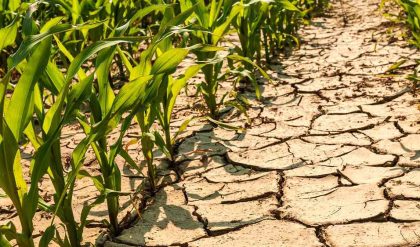There are many different types of irrigation systems, depending on how the water is distributed throughout the field. Some common types of irrigation systems include:
Surface irrigation
Water is distributed over and across land by gravity, no mechanical pump involved.
Localized irrigation
Water is distributed under low pressure, through a piped network and applied to each plant.
Drip irrigation
A type of localized irrigation in which drops of water are delivered at or near the root of plants. In this type of irrigation, evaporation and runoff are minimized.
Sprinkler irrigation
Water is distributed by overhead high-pressure sprinklers or guns from a central location in the field or from sprinklers on moving platforms.
Center pivot irrigation
Water is distributed by a system of sprinklers that move on wheeled towers in a circular pattern. This system is common in flat areas of the United States.
Lateral move irrigation
Water is distributed through a series of pipes, each with a wheel and a set of sprinklers, which are rotated either by hand or with a purpose-built mechanism. The sprinklers move a certain distance across the field and then need to have the water hose reconnected for the next distance. This system tends to be less expensive but requires more labor than others.
Sub-irrigation
Water is distributed across land by raising the water table, through a system of pumping stations, canals, gates, and ditches. This type of irrigation is most effective in areas with high water tables.
Manual irrigation
Water is distributed across land through manual labor and watering cans. This system is very labor intensive.




